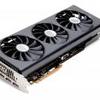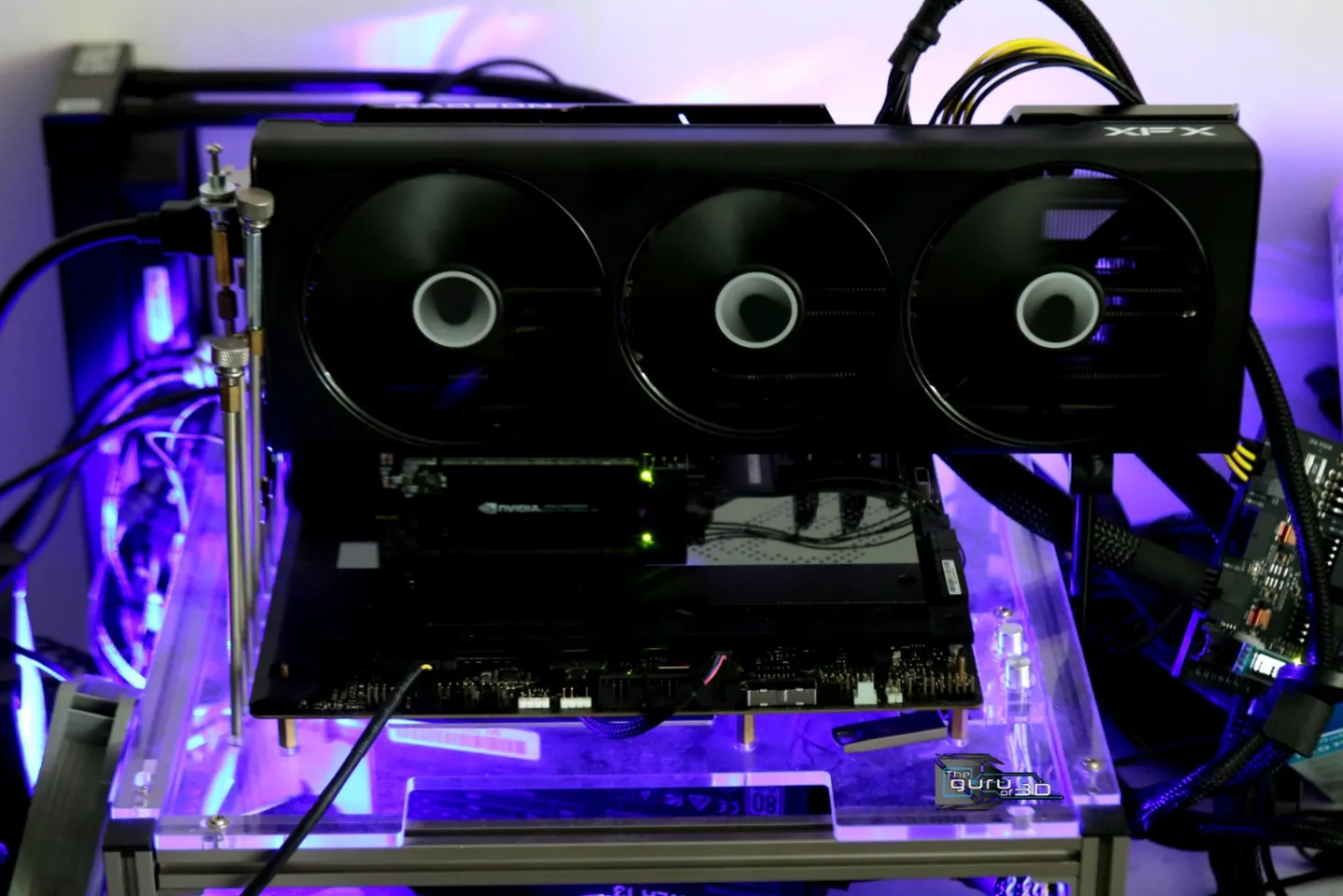Introduction
XFX Radeon RX 7700XT (QiCK 319) review
With 12GB and a proper amount of raw shader performance
AMD has unveiled its Radeon RX 7700 XT and 7800 XT graphics cards, broadening its range from mainstream to high-end graphics solutions. These GPUs mark a notable extension to AMD's portfolio. Although their release was postponed, these cards feature powerful shader capabilities, coupled with 12GB and 16GB GDDR6 graphics memory, respectively. Such features position the GPUs to notably influence the WQHD monitor resolution segment. However, premium performance comes with a price: the 7700 XT is priced at $449, while the 7800 XT begins at $499. For our assessment, we will be examining the 12GB 7700 XT from XFX as they shipped in the QICK 319 edition. For a while now, rumours have been flooding the graphics card arena, and as so often, most of them become an actuality. Meet the new Navi 32-based GPU models. The Radeon 7800 XT with its 16GB 256-bit memory configuration at 19.5 Gbps, is bound to impress. This particular iteration is poised to utilize the complete 60 CU / 3840 Shader processors setup of the GPU and boasts a Total Board Power (TBP) of 263W. The AMD Radeon RX 7800 XT GPU is built upon the Navi 32 SKU framework and thus chiplets, incorporating four Memory Controller Domains (MCDs). The GPU core boasts 3840 cores, meticulously distributed across 60 Compute Units to enhance performance. Additionally, the GPU incorporates a substantial 64 MB Infinity Cache, functioning at an 18 Gbps pin speed, thereby yielding a commendable total bandwidth of 576 GB/s. The second Navi 32 variant, aka Radeon RX 7700 XT, sees a friendly 54 CU/3456 shader processor configuration, complemented by 12GB memory on a 192-bit bus running at an effective 18 Gbps data rate. This points towards a Navi 32 iteration with one of the four MCDs disabled, resulting in 48 MB of Infinity Cache. The core setup of the RX 7700 XT is anticipated to encompass approximately 54 Compute Units, housing a total of 3456 stream processors.
| AMD Radeon RX 7000 Specifications | |||||
|---|---|---|---|---|---|
| Radeon RX | 7900XTX | 7900 XT | 7800 XT | 7700 XT | 7600 |
| Architecture | RDNA3 (TSMC N5) | RDNA3 (TSMC N5) | RDNA3 (TSMC N6) | RDNA3 (TSMC N6) | RDNA3 (TSMC N6) |
| GPU | Navi 31 XTX | Navi 31 XT | Navi 32 XL | Navi 32 XT | Navi 33 |
| GPU Clusters | 96 CUs | 84 CUs | 60 CUs | 54 CUs | 32 CUs |
| FP32 Cores | 6144 | 5376 | 3840 | 3456 | 2048 |
| Game Clock | 2.3 GHz | 2.0 GHz | 2.124 GHz | 2.171 GHz | 2.25 GHz |
| Boost Clock | 2.5 GHz | 2.4 GHz | 2.43 GHz | 2.54 | 2.625 GHz |
| Memory | 24GB G6 | 20GB G6 | 16GB G6 | 12 GB G6 | 8GB G6 |
| Memory Bus | 384-bit | 320-bit | 256-bit | 192-bit | 128-bit |
| Memory Speed | 20 Gbps | 20 Gbps | 19.5 Gbps | 18 Gbps | 18 Gbps |
| L3 Cache | 96 MB | 80 MB | 64 MB Gen2 | 48MB Gen2 | 32 MB Gen2 |
| Board Power | 355W | 315W | 263W | 245W | 165W |
| Power Connectors | 2 × 8-pin | 2 × 8-pin | 2 × 8-pin | 2 × 8-pin | 1 x 8-pin |
| PCIe Interface | Gen4 x16 | Gen4 x16 | Gen4 x16 | Gen4 x16 | Gen4 x8 |
| MSRP | $999 | $899 | $489 | $449 | $269 |
| Launch Date | December 2022 | December 2022 | September 2023 | September 2023 | May 2023 |
Compared to Nvidia's RTX 4070 the AMD GPU exhibits higher power consumption figures than Nvidia's offerings. Specifically, it consumes 245W. There's an implication that third-party versions of this GPU might adjust their TGP (total graphics power) values approaching 275W, especially in overclocked variants. Such an adjustment suggests a trend toward more robust designs. This GPU utilizes a 14-phase digital PWM for efficient power delivery. Notably, the BIOS is adjusted to manage an extra 20W above the standard specification. In terms of cooling, the design integrates 100mm + 90mm + 100mm 13-blade fans. The fans are programmed to stop when the card's temperature drops below 50°C. For heat dissipation, the GPU uses a nickel-plated component to draw heat away, which then flows through five 6mm heatpipes. An aluminum plate aids in cooling the GDDR6 modules. XFX ensures optimal heat management by strategically placing thermal pads on all GDDR, VRM, and vital components, amounting to 14 thermal pads in total. Furthermore, a solid aluminum backplate guards the electronic components on the reverse side of the card and provides support, preventing the PCB from bending. To enhance heat dissipation, vent holes are incorporated to ensure heat doesn't accumulate.


